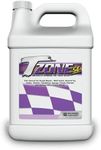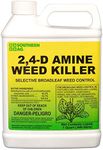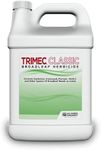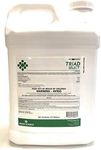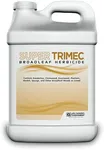Buying Guide for the Best Broadleaf Herbicides
Choosing the right broadleaf herbicide can be crucial for maintaining a healthy and attractive lawn or garden. Broadleaf herbicides are designed to target and eliminate broadleaf weeds, which are different from grassy weeds. To make an informed decision, it's important to understand the key specifications and how they relate to your specific needs. Here are the main factors to consider when selecting a broadleaf herbicide.Active IngredientsThe active ingredients in a herbicide are the chemicals responsible for killing the weeds. Common active ingredients in broadleaf herbicides include 2,4-D, dicamba, and MCPP. Each ingredient targets different types of weeds and has varying levels of effectiveness. It's important to identify the specific weeds you are dealing with and choose a herbicide with active ingredients that are known to be effective against those weeds. For example, 2,4-D is effective against dandelions and clover, while dicamba is good for controlling chickweed and henbit.
Selective vs. Non-SelectiveSelective herbicides target specific types of plants, such as broadleaf weeds, without harming desirable plants like grass. Non-selective herbicides, on the other hand, will kill any plant they come into contact with. For lawn care, a selective herbicide is usually the best choice because it will eliminate the weeds without damaging your grass. If you need to clear an area completely, such as a driveway or patio, a non-selective herbicide might be more appropriate.
Application MethodHerbicides can be applied in various ways, including liquid sprays, granules, and ready-to-use formulas. Liquid sprays are often more effective for large areas and can be applied using a sprayer. Granules are easy to spread and are good for covering large lawns. Ready-to-use formulas are convenient for spot treatments and small areas. Consider the size of the area you need to treat and your preferred method of application when choosing a herbicide.
Residual ControlResidual control refers to how long the herbicide remains active in the soil after application. Some herbicides provide long-lasting control, preventing new weeds from germinating for weeks or even months. Others break down more quickly and may require more frequent applications. If you want long-term weed control, look for a herbicide with a longer residual effect. However, if you are concerned about potential damage to nearby plants or future planting, a herbicide with a shorter residual period may be more suitable.
RainfastnessRainfastness is the ability of a herbicide to remain effective after it has been applied, even if it rains shortly afterward. Some herbicides need several hours to become rainfast, while others can withstand rain within an hour of application. If you live in an area with frequent rain or are applying the herbicide during a rainy season, choose a product with a shorter rainfast period to ensure it remains effective.
Safety and Environmental ImpactConsider the safety of the herbicide for humans, pets, and the environment. Some herbicides are more toxic than others and may require protective gear during application. Additionally, certain products may have a greater impact on the environment, potentially harming beneficial insects or contaminating water sources. Look for herbicides that are labeled as safe for use around children and pets and have a lower environmental impact if these factors are important to you.



